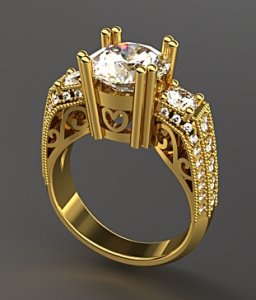Imdanny
Ideal_Rock
- Joined
- Jan 21, 2008
- Messages
- 6,186
Let's assume a band ring, to make it simple.
There is "CAD/ cast"? Yes? What is this? What does "cast" mean? What is the alternative?
What does "handmade" mean in terms of the actual process?
How is any of this different than taking a tube of metal and sectioning it, then punching a hole in the center, and polishing up the rest?
There is a process of pouring liquid metal into a mold. What is this called?
Any information/ thoughts appreciated.
Thanks.
There is "CAD/ cast"? Yes? What is this? What does "cast" mean? What is the alternative?
What does "handmade" mean in terms of the actual process?
How is any of this different than taking a tube of metal and sectioning it, then punching a hole in the center, and polishing up the rest?
There is a process of pouring liquid metal into a mold. What is this called?
Any information/ thoughts appreciated.
Thanks.





300x240.png)